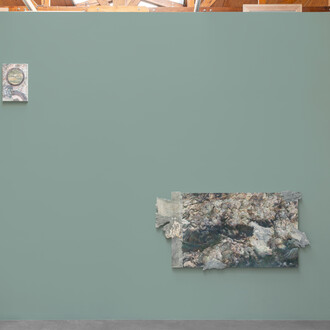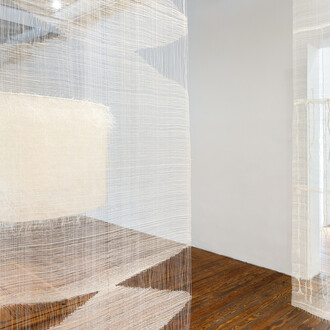Maggie once handed me a tiny “book” (or ‘anti-book’) made from six silica gel packets—the kind tucked in snack bags and shoe boxes, usually tossed away without a thought. She stapled them together and taped her name vertically across the front. This fat, absurd little object, all futility and ephemerality, was less a container of content than a guarantee of disappearance. I thought it fitted neatly with Fluxus multiples in spirit: provisional, playful, and yet with sharp conceptual grounding.
In the late ’80s and into the ’90s I drifted in and out of work for Kosugi, Tone, Nam June, and Shigeko. My personal Fluxus anecdotes: One summer day in an East Village apartment, when chatting with Kosugi, a breeze tipped an Evian cap onto the floor with a dry rattle. Kosugi smiled: “That kind of sound is really nice, isn’t it?” I used to ask Tone about art, music, life in NYC… His reflection feels more resonant now than ever: the endless effort to merge art and life only convinced him that the real question was why it’s impossible to exist without art. Nam June, with his usual nonchalance, said, “As an Asian artist, I have to be entertaining.” In retrospect, I guess that was his art of maneuvering through the NY art world. Shigeko was indomitable. Hours of our chats were about how hard it was to live and work as an artist in NYC, interspersed with art world gossip. Now they are all gone.
Is Maggie a Fluxus heir? Probably not. But her sense of art as something lived rather than something put on a pedestal—echoes their impulse. After all, wasn’t Fluxus about a shared disposition, a sensibility that allowed art to seep into the ordinary?
Her twenty small paintings for this show cluster into three loose groups: visual- poetry–like canvases collaged with cut-out letters and words; pieces using old imagery, fabrics, trinkets—moppet-like characters, a vintage brooch, paper strips; and thickly painted abstractions, one with a Polaroid pasted in. None comes off as a clear-cut statement. They feel provisional, tentative, held together by framing and light, deliberate touches on the surface. Moving between flimsy cutouts, retro melancholy, and thick impasto, pieces don’t resolve into a tightly integrated whole, but accumulate into polyphony of surfaces.
I’m not sure if this is the right way to put it, but as Maggie herself admits, the work comes out of a collage process—pulling in all kinds of collected material and ephemera along the way and putting it to use. What we see scattered through these pieces are the things she’s been into lately, what she thinks looks cool, what she’s been dragging along for years, all the traces she can’t quite shake. A brooch here, a clipping of some retro character there—they may carry meaning in Maggie’s personal history, but whether they come across with any kind of “meaning” is questionable. It’s less that the signs add up, and more that the whole body of work gives off soft, hazy signals, that let the show cohere as an assemblage of variations.
What’s really at play is her feel for the now—her “nowness”—channeled through her sensibility. I mean, all that deep meaning, problematics, critical scaffolding, frankly feel unnecessary. The work doesn’t settle nicely within an art-world context; it extends to fashion or music, staging and amplifying that sense of the present. That’s actually a tough place to stake out, but that’s exactly where she’s put herself, I think.
We’ve seen plenty of ‘branding’ games played between art and fashion lately—a kind of mutual complicity. Fashion looks to art for its aura, and art looks to fashion for trend and style (and, let’s face it, money). I’m not sure how Maggie feels about that exchange. In any event, she works freely, selfishly even, but always with a serious edge—that’s what makes her work compelling.
Two last things. First: the recurring presence of retro “Asian” imagery in her work, which she uses with deliberate intent. Think of the stuff that once turned up as inserts in shōjo manga, printed on stationery, pasted as wallpaper in cheap eateries—images tinged with a kind of melancholy, something of the ennui one finds in old pop ephemera. She works with this material, but perhaps with an aesthetic memory of “Asian-ness” as lived by an Asian-American artist: the things she’s really seen and touched, feeding back into the things she’s known only through film, music, or the web. And this appropriation has little to do with conversations about representation or identity politics in an institutionalized art context (if, it does, sorry, of course). It’s more of a hybrid aesthetic, a subtle fold of ‘Asian Pop’ into the mix. That’s what I like.
Second: what comes along with it, this sense of “girlhood” (the cute, the girly, the kawaii), I’d love to go deeper into that (maybe in connection to her adoration of “Love & Pop”), but I’m out of time—so I’ll slip back to my retreat.
(Text by Yuzo Sakuramoto)












